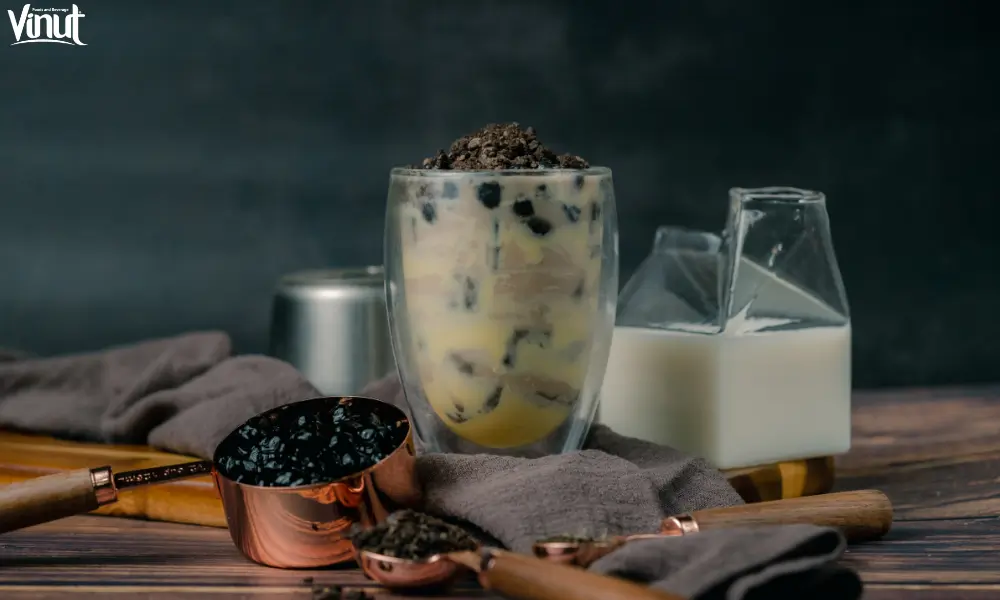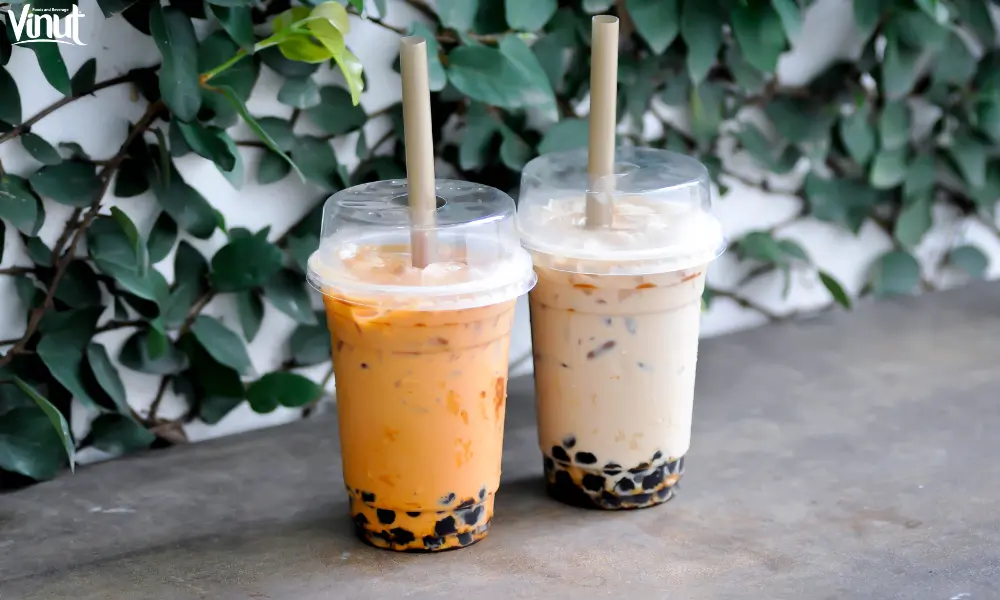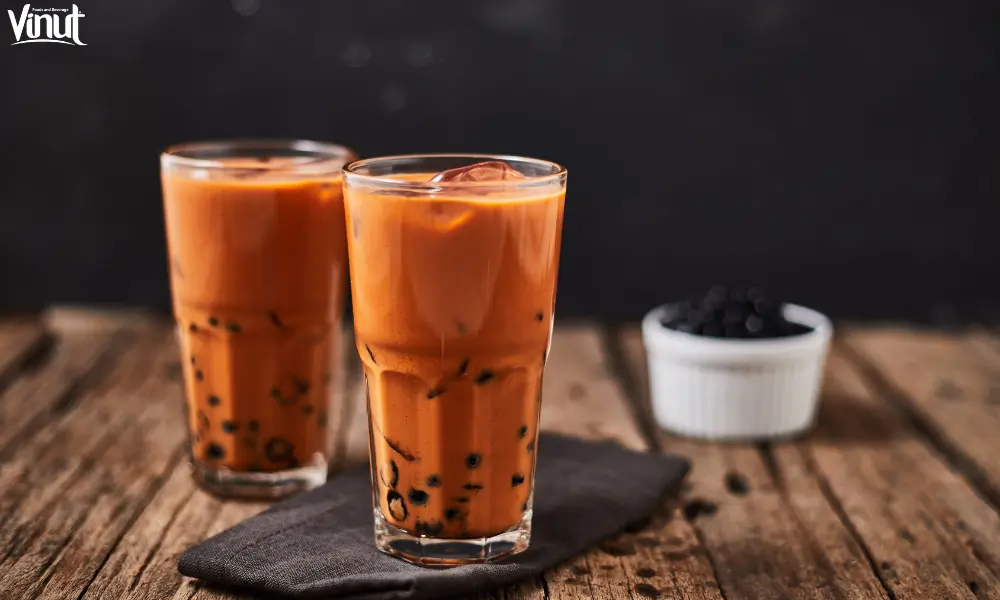Bubble Tea A Comprehensive Guide
Bubble tea, also known as boba tea or pearl milk tea, has taken the world by storm. Originating from Taiwan in the 1980s, this sweet and refreshing drink has become a global phenomenon, with bubble tea shops popping up in every corner of the world. But what exactly is bubble tea and how is it made?
In this comprehensive guide, VINUT will delve into the art of making bubble tea, explore its flavors and variations, and discuss its cultural impact and future. So grab your favorite cup and let’s dive into the world of bubble tea!
The Art of Making Bubble Tea
Making bubble tea may seem like a simple task, but several key elements go into crafting the perfect cup. From choosing the right ingredients to mastering the techniques, here are some essential tips for making this drink at home.
Essential Tips for Crafting the Perfect Bubble Tea

- Choose high-quality ingredients: The quality of your ingredients will greatly affect the taste of your drink. Use fresh and high-quality tea leaves, milk, and toppings for the best results.
- Experiment with different teas: While black tea is the traditional base for bubble tea, you can also use green tea, oolong tea, or even fruit tea for a unique flavor.
- Don’t overcook the tapioca pearls: Tapioca pearls, also known as boba, are an essential component of this beverage. Make sure to follow the cooking instructions carefully and do not overcook them, as they can become too soft and lose their chewy texture.
- Use a cocktail shaker: To achieve the signature frothy and creamy texture of this drink, use a cocktail shaker to mix the tea, milk, and ice before adding the toppings.
- Adjust sweetness to your liking: It is known for its sweetness, but you can adjust the amount of sugar or sweetener to your preference. You can also use alternative sweeteners such as honey or agave syrup.
- Use fresh toppings: From tapioca pearls to fruit jellies, there are endless options for toppings in it. Make sure to use fresh and high-quality toppings for the best taste and texture.
Explore the Flavors and Variations of Bubble Tea
This drink comes in a variety of flavors and variations, making it a versatile and customizable drink. Here are some popular flavors and variations you can try:
- Classic Milk Tea: This is the most traditional and popular flavor, made with black tea, milk, and tapioca pearls. It has a rich and creamy taste with a hint of sweetness.
- Fruit Tea: For a refreshing and fruity twist, try using fruit teas such as passionfruit, peach, or mango as the base for your tea. You can also add fresh fruit chunks as toppings.
- Matcha: Matcha lovers will enjoy this variation, made with green tea powder, milk, and tapioca pearls. It has a unique earthy and slightly bitter taste.
- Taro: Taro, a root vegetable commonly used in Asian cuisine, gives this bubble tea its distinct purple color and nutty flavor. It is often paired with coconut milk for a creamy and indulgent taste.
- Brown Sugar: This trendy variation features brown sugar syrup, giving it a rich and caramel-like flavor. It is often topped with brown sugar boba for an extra burst of sweetness.
DIY Boba: Step-by-Step Instructions
Now that you know the essential tips and different flavors, let’s dive into the step-by-step instructions for making your boba at home.

Ingredients:
- 1/4 cup dried tapioca pearls
- 1 cup brewed tea of your choice
- 1/4 cup milk of your choice
- 1-2 tablespoons sugar or sweetener (adjust to taste)
- Ice cubes
- Toppings of your choice (tapioca pearls, fruit jellies, etc.)
Instructions:
- Cook the tapioca pearls according to the package instructions. Once cooked, drain and rinse them with cold water.
- In a cocktail shaker, combine the brewed tea, milk, sugar, and ice cubes. Shake vigorously for about 30 seconds.
- Add the cooked tapioca pearls to a glass and pour the tea mixture over it.
- Add your desired toppings on top of the tea.
- Insert a wide straw and enjoy your homemade bubble tea!
The Science Behind Bubble Tea
This drink may seem like a simple drink, but there is science behind its unique texture and appearance. The key ingredient that gives bubble tea its signature chewy texture is tapioca pearls, also known as boba. These small, translucent balls are made from cassava root starch and are cooked in boiling water until they become soft and chewy.

The bubbles or foam on top of bubble tea are created by shaking the tea mixture in a cocktail shaker. This process aerates the liquid, creating tiny air bubbles that give the drink its frothy and creamy texture. The addition of milk also contributes to the creamy texture.
Bubble Tea as a Culinary Phenomenon
This drink has become more than just a popular drink; it has evolved into a cultural phenomenon. Its rise in popularity can be attributed to its unique taste, customizable options, and Instagram-worthy appearance. But beyond its trendiness, bubble tea has also become a staple in many Asian countries, with dedicated shops and chains dominating the market.
In recent years, this tea has also gained recognition in the culinary world, with chefs incorporating it into their dishes and desserts. From bubble tea-flavored ice cream to bubble tea cakes, this drink has expanded beyond its traditional form and has become a versatile ingredient in the kitchen.
The Health Benefits and Concerns
As with any food or drink, there are both health benefits and concerns associated with bubble tea. On the positive side, bubble tea contains antioxidants from the tea leaves and can be a good source of calcium and protein if made with milk. However, the high sugar content and use of artificial sweeteners in some variations can be a cause for concern.

Another potential concern is the use of plastic straws in bubble tea, which contributes to plastic waste and pollution. To combat this issue, many bubble tea shops have started offering eco-friendly alternatives such as paper or metal straws.
Bubble Tea and Cultural Impact
This drink not only has a significant impact on the culinary world but also on culture and society. In Taiwan, where it originated, it has become a symbol of youth and modernity. It is also a popular drink among students and young adults, often enjoyed as a social activity with friends.
In other countries, this tea has become a representation of Asian culture and has helped introduce Taiwanese cuisine to the world. Its popularity has also led to the opening of bubble tea shops owned and operated by people of Asian descent, providing a platform for cultural representation and celebration.
The Future of Bubble Tea
The future of this beverage looks bright, with no signs of its popularity slowing down. The global market is expected to reach $4.3 billion by 2027. With the rise of health-conscious consumers, we can also expect to see more variations of bubble tea that cater to different dietary needs and preferences.
Additionally, technology is also playing a role in the evolution. Some shops now offer self-ordering kiosks and mobile apps for a more convenient and efficient ordering process. There are also plans to introduce automated machines that can make it in just a few seconds.
Conclusion
This drink has come a long way since its humble beginnings in Taiwan. From a simple drink to a cultural phenomenon, it has captured the hearts and taste buds of people all over the world. With its endless flavor combinations and customizable options, bubble tea is here to stay and will continue to evolve and innovate in the future. So next time you sip on your favorite cup of bubble tea, remember the art, science, and cultural impact behind this beloved drink.
